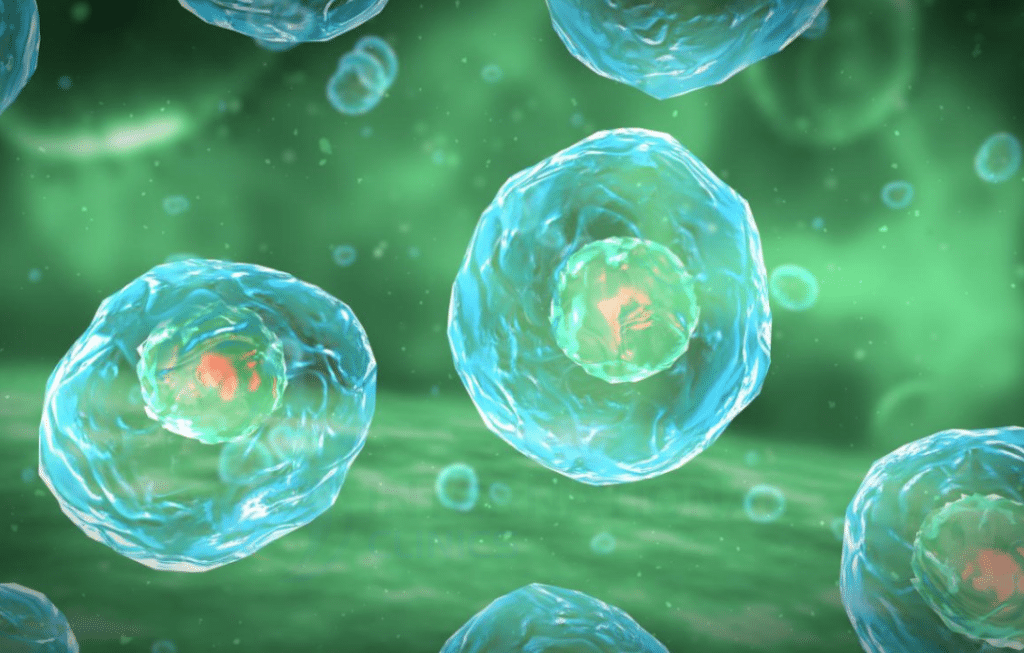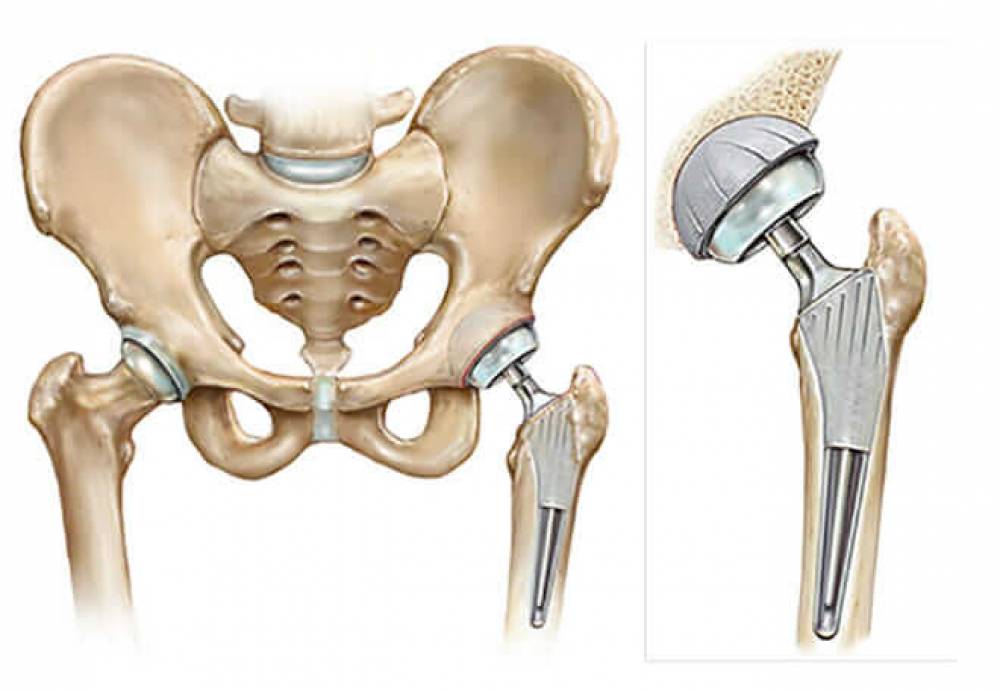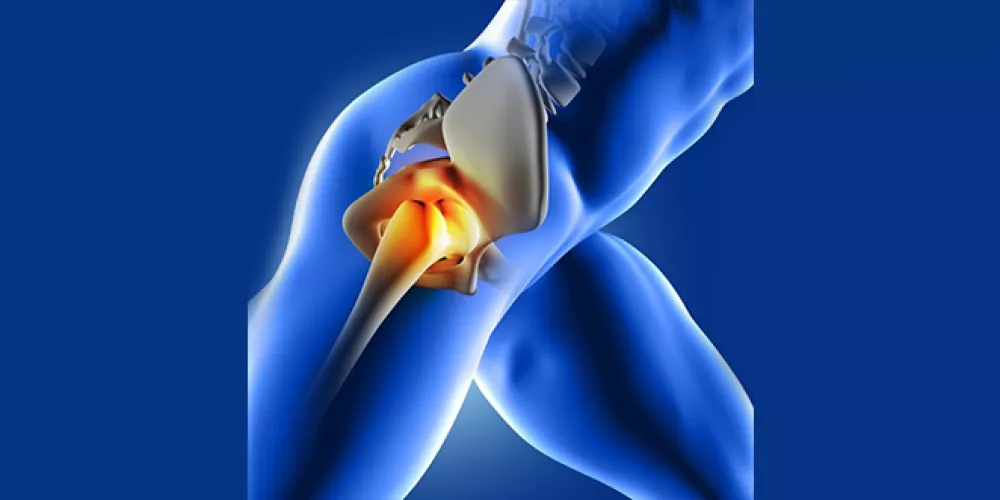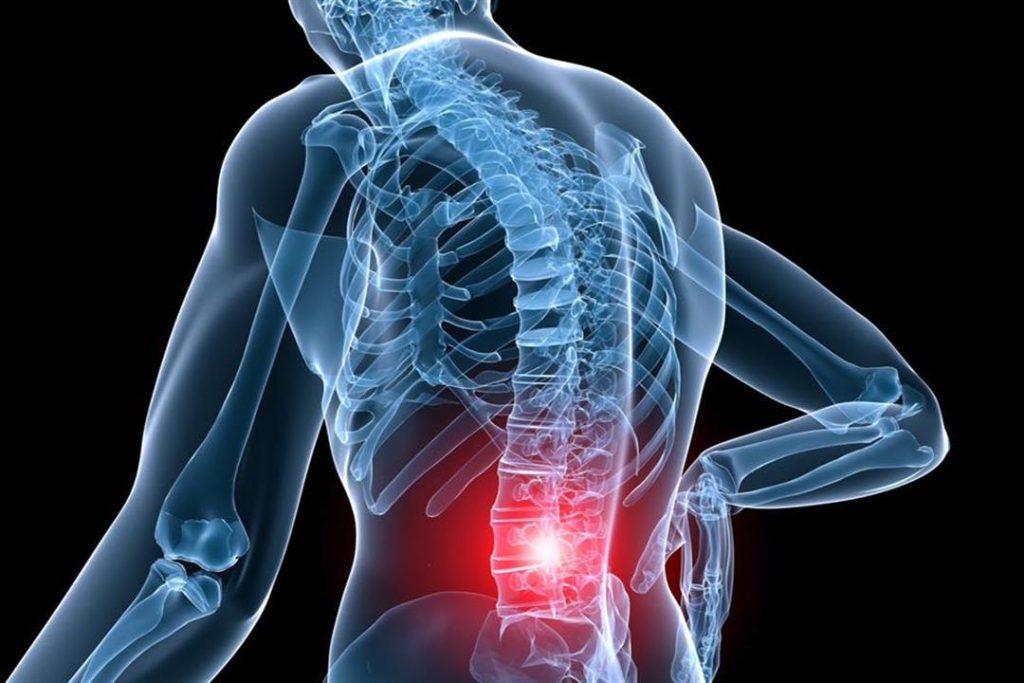What are the symptoms of sciatica? And learn about the difference between it and disc herniation What are the symptoms of sciatica?
أخر تحديث :
What are the symptoms of sciatica?
Sciatica, also known as sciatic nerve inflammation, is a medical condition that affects the sciatic nerve, which extends from the back through the pelvic area and down the leg. This disease can be very painful and affect the quality of life of the patient. In this article, we will learn about the symptoms of sciatica and how it can be treated.
Symptoms of sciatica:
- Lower back pain: One of the main symptoms of sciatica is pain in the back area, which can be sharp or chronic. The pain usually starts in the lower back and gradually extends down the leg.
- Pain in the hip and buttocks: The patient may feel sharp pain in the hip and buttocks area, which can sometimes be more severe than the back pain itself.
- Numbness and tingling in the leg: The pain in the sciatic nerve can be accompanied by a feeling of numbness and tingling in the leg. This sensation can spread to the foot and affect the person’s normal sense of touch.
- Weakness in the leg: In advanced cases of sciatica, the pressure on the sciatic nerve can cause a loss of strength in the affected leg. It may be difficult for the patient to walk or perform daily activities.
- Difficulty in controlling urination and bowel movements: In rare cases, sciatica can lead to difficulty in controlling urination and bowel movements due to the pressure of the tumor on the nerves responsible for these functions.
What is the best medicine for treating sciatica?
Sciatica, also known as sciatic nerve inflammation, is a common condition that causes acute or chronic pain in the lower back, hip, and leg area. This pain is due to irritation or pressure on the sciatic nerve and may be accompanied by symptoms such as numbness, tingling, and muscle weakness. Sciatica can be treated in several ways, and the treatment depends on the severity of the pain, symptoms, and the patient’s overall health condition. In this article, we will explore how to treat sciatica.
- Physical Therapy: Physical therapy sessions are one of the fundamentals of treating sciatica. Physical therapy strengthens the muscles surrounding the sciatic nerve and improves the flexibility of the spine. Physical therapy techniques may include stretching exercises, aerobic exercises, and massage, which help relieve pain and increase range of motion.
- Pain Relievers and Non-Steroidal Anti-Inflammatory Drugs (NSAIDs): The use of pain relievers and non-steroidal anti-inflammatory drugs (such as ibuprofen and naproxen) are among the first options in treating sciatica. These medications help reduce pain and inflammation. However, it is important to consult a doctor before using them to determine the appropriate dosage and duration of use.
- Muscle Relaxants: Muscle spasms may be responsible for increasing pain in cases of sciatica. Muscle relaxants such as baclofen (Baclofen) or tizanidine (Tizanidine) can help relieve spasms and pain.
- Pain Modulating Medications: Pain modulating medications such as gabapentin (Gabapentin) and pregabalin (Pregabalin) can help reduce pain and improve comfort. These drugs work by stabilizing pain signals in the central nervous system.
- Injection Therapy: In some cases, the sciatic nerve may be directly injected with anesthetic substances to relieve pain and inflammation. This procedure is performed by a qualified pain specialist and can provide rapid relief from pain.
- Surgery: Surgery is a rare option and is resorted to when there is no significant improvement with other treatments and in severe cases of sciatica. Surgery may include removing the tissue that is pressing on the sciatic nerve or repairing damaged tissue.
- Psychological Therapy: Psychological therapy may play a role in managing sciatica, as it can help provide psychological support and teach pain management strategies and dealing with the psychological symptoms associated with the condition.
- Lifestyle Modifications: Lifestyle modifications include changes such as regular exercise, maintaining a healthy weight, sitting with proper posture, avoiding heavy lifting, and abstaining from smoking. These changes can contribute to reducing the risk of exacerbating sciatica.
- Laser Therapy: In some cases, laser therapy can be used to reduce nerve irritation and pain in sciatica.
- Complementary and Alternative Medicine Treatments: Some patients find relief from pain using complementary therapies such as acupuncture, ozone therapy, massage therapy, herbal medicine, and yoga.
In conclusion, patients should consult a specialist for an accurate assessment and guidance towards the most appropriate treatment for their condition. It is important to adhere to the treatment and dosages as prescribed, and to be cautious when using alternative medicines and techniques.
Where does sciatica pain start?
Sciatica, also known as inflammation of the sciatic nerve, is a common medical condition that results in sharp or chronic pain in the back, hip, and leg regions. To understand where this pain originates and how it develops, we need to delve deeply into the anatomy and potential causes of sciatica.
- Basic Anatomy: To grasp where the pain in sciatica begins, we must recognize the basic anatomy of the area. The sciatic nerve is the largest nerve in the body and extends from the lower back, through the hip, and down to the leg. The sciatic nerve is made up of many nerve fibers that transmit pain signals as well as sensory information to the skin and muscles.
- Herniated Disc: One of the primary causes that can lead to sciatica is a herniated disc, which is a condition that occurs when the intervertebral disc that serves as a cushion between the vertebrae in the spinal column slips out and presses on the sciatic nerve. This compression can arise when the disc tears or bulges abnormally.
- Spinal Stenosis: Spinal stenosis is another condition that leads to sciatica. Narrowing of the spinal canal in the spine through which the sciatic nerve passes can cause compression and irritation of the nerve.
- Injuries and Inflammation: Injuries or inflammations in the area of the sciatic nerve can be other causes of sciatica. For instance, muscle inflammation or nerve inflammation as a result of an injury or degenerative changes can lead to pain.
- Nerve Compression: In some instances, the sciatic nerve itself may be compressed due to the formation of scar tissue or swellings. This nerve compression can lead to sharp pain and distressing symptoms.
- Genetic Factors and Environmental Factors: Genetic factors play a role in determining who may be more susceptible to sciatica. Some individuals might be more prone to developing spinal issues leading to sciatica due to hereditary factors. Furthermore, environmental factors such as poor sitting habits or heavy lifting can play a role in exacerbating the condition.
- Other Health Disorders: Some other health diseases and disorders such as diabetes and arthritis can increase the risk of developing sciatica.
- Psychological Stress: Some research suggests that psychological stress and tension can increase the risk of developing sciatica or worsening its symptoms.
It is important to understand that sciatica is not a single condition arising from a singular source; rather, it is influenced by multiple factors and can develop over time. If you are suffering from symptoms of sciatica or suspect its presence, you should consult a specialist to provide an assessment and appropriate treatment. Treatments typically include a combination of medication, physical therapy, and lifestyle changes to achieve improvement and pain relief.
Sciatica, also known as sciatic nerve inflammation, is a medical condition that affects the sciatic nerve, which extends from the back area to the hip and leg. This condition causes sharp or chronic pain in the back, hip, and leg, which may have a significant impact on the quality of life of the affected person. Although sciatica can occur on any side of the body, there is no fixed rule that determines which side will be affected.
From which side does sciatica begin? Sciatica can start on any side of the body, and it is not specifically related to the right or left side. The location of the pain’s onset depends on the underlying cause of the condition and where the irritation or pressure on the sciatic nerve occurs.
It is worth noting that the sciatic nerve originates from the spinal column in the pelvic region and extends downward through the hip and leg, which is why symptoms of sciatica typically include pain, numbness, and tingling in the hip and leg. The severity of the pain can increase or the symptoms can change over time as the condition progresses.
Factors affecting the location of pain in sciatica:
- The underlying cause of sciatica: The location of the pain’s onset can be associated with the underlying cause of sciatica. For example, if the cause is a herniated disc in the lower part of the spine, then the pain will usually start at this location.
- Specific irritation or pressure: If there is specific irritation or pressure on the sciatic nerve on one side of the body, then the pain will originate from that site.
- Individual factors: Some people may have variability in pain experience, which can lead to differences in the location of pain onset in cases of sciatica.
In conclusion: Sciatica is a condition that causes severe pain and significant impacts on the quality of life of those affected by it. The location of pain onset does not depend on the right or left side but is based on the surrounding factors of the condition. It is important to consult a specialist for assessment and necessary treatment, whether the pain is on the right side, the left side, or any other location.
How long does sciatica pain last?
The duration of sciatica pain can vary significantly from person to person, based on the underlying cause of the condition, the treatment followed, and the measures taken. Sciatica is a medical condition that affects the sciatic nerve and causes sharp or chronic pain in the back, hip, and leg. Sciatica pain may be temporary in some cases, while it may last for a longer period in others. In this article, we will take a general look at how long sciatica pain can last.
- Factors that affect the duration of pain:
- The underlying cause: The duration of sciatica pain largely depends on the underlying cause of the condition. For example, if the pain is caused by a herniated disc and is successfully treated, the pain may be temporary and disappear over time. However, if the cause is nerve stenosis or permanent damage, the pain may be chronic.
- The treatment followed: The type and effectiveness of the treatment can play an important role in the duration of the pain. If sciatica is diagnosed early and treated effectively, the pain may be short-lived and disappear after a period of treatment. However, if the treatment is delayed or not properly conducted, the pain may persist for a longer period.
- Individual factors: Individual factors also play a role in the duration of sciatica pain. Some may respond better to treatment and experience quicker improvement than others based on factors such as overall health, availability of support, and adherence to treatment.
- Temporary pain and chronic pain:
- Temporary pain: In many cases, sciatica pain can be temporary and gradually disappear over time with the appropriate treatment. This is especially true for temporary conditions resulting from temporary irritation of the sciatic nerve such as muscle inflammation or muscular tension.
- Chronic pain: In other cases, sciatica pain can become chronic, meaning it persists for a long time and may be bothersome to the patient. Chronic pain may require ongoing medical management and the use of a variety of treatments to reduce pain and increase comfort.
How long does sciatica pain last?
The duration of sciatica pain can significantly vary from one individual to another, depending on the underlying cause of the condition, the pursued treatment, and the measures taken. Sciatica is a medical condition that impacts the sciatic nerve and leads to either acute or chronic pain in the lower back, hip, and leg area. The pain associated with sciatica might be transient in certain cases, whereas in others, it might persist for an extended time. In this article, we aim to provide a general overview of the potential duration of sciatica pain.
Factors influencing the duration of pain:
- The underlying cause: The duration of sciatica pain is largely contingent upon the root cause of the condition. For instance, if the pain is a result of a herniated disc that has been effectively treated, it may be short-lived and diminish as time progresses. Conversely, if the pain stems from nerve stenosis or is due to irreversible nerve damage, the pain could be of a chronic nature.
- The treatment undertaken: The nature and efficacy of the treatment undertaken can significantly influence the pain’s duration. Early diagnosis and effective treatment of sciatica can lead to the pain being temporary, subsiding post-treatment. On the other hand, should there be a delay in treatment or if the treatment isn’t properly executed, the pain could endure for a more prolonged period.
- Individual factors: The duration of sciatica pain is also affected by individual factors. Some individuals might respond more positively to treatment and notice a faster recovery compared to others, based on elements like their overall health condition, support system, and commitment to the treatment regimen.
Temporary versus chronic pain:
- Temporary pain: Sciatica pain is often temporary, gradually abating with suitable treatment over a certain period. This particularly applies to conditions that arise from temporary nerve irritation, such as muscular inflammation or strain.
- Chronic pain: Alternatively, sciatica pain can evolve into a chronic state, indicating that it lingers for a substantial duration and can cause continuous discomfort to the patient. Managing chronic pain typically necessitates sustained medical intervention and an array of therapeutic approaches aimed at lessening the pain and enhancing the patient’s comfort.
- The Self Role in Treatment:
Playing a significant role in the persistence of sciatic nerve pain. Adherence to treatment guidelines, following a healthy lifestyle, engaging in postural exercises and strengthening back muscles, and maintaining a healthy lifestyle can have a major impact on improving the condition and reducing the duration of pain.
The duration of sciatic nerve pain depends on many factors, and there is no fixed answer to the question of how many days the pain will last. Individuals with sciatica are always encouraged to seek appropriate medical care and consult with specialists to obtain an accurate assessment and a treatment plan that suits their individual condition.
What are the causes of sciatica?
Sciatica, also known as sciatic nerve inflammation, is a medical condition that causes acute or chronic pain in the back, hip, and leg area. Sciatica is a common condition that affects many people, and there are several reasons that can lead to its onset. In this article, we will review the main reasons for the appearance of sciatica.
- Herniated Disc: One of the most common reasons for the appearance of sciatica is a herniated disc. The spine is composed of vertebrae separated by cartilaginous discs that act as cushions between them. When a disc herniates or ruptures, it can press on the sciatic nerve, leading to pain and accompanying symptoms of sciatica.
- Spinal Stenosis: Spinal stenosis is the compression of the sciatic nerve resulting from a narrowing of the vertebral canal in the spine. This narrowing can be caused by the formation of scars or bone deposits on the vertebrae, which compress the sciatic nerve and cause the symptoms of sciatica.
- Myositis: Myositis can be one of the rare causes of sciatica. Inflammation of the muscles can cause swelling and inflammation of the muscles surrounding the sciatic nerve, leading to pain and symptoms.
- Injuries and Tears: Acute injuries or tears in the area of the sciatic nerve can also cause the appearance of sciatica. For example, if you are involved in a car accident or fall abnormally and the sciatic nerve is damaged, this can cause pain.
- Genetic Factors and Age Factor: Some people may be more prone to sciatica due to genetic factors. Moreover, age-related factors such as aging can increase the likelihood of this condition appearing.
- Environmental Factors and Lifestyle: Some environmental factors and lifestyle choices can increase the likelihood of developing sciatica. For example, improper lifting of heavy objects or sitting for extended periods in unhealthy positions can increase pressure on the sciatic nerve.
- Other Diseases and Health Conditions: Some other diseases and health conditions, such as diabetes and arthritis, can increase the risk of developing sciatica.
In Conclusion: Sciatica is a common medical condition that causes acute or chronic pain in the lower back, hip, and leg region. There are several potential causes for this condition, and you may have specific factors that increase your likelihood of developing it. If you are experiencing symptoms of sciatica, it is important to consult a doctor for an assessment and the necessary treatment to effectively manage the condition.
What Is the Difference Between Herniated Disc and Sciatica?
Herniated disc and sciatica are two medical conditions that can cause pain in the lower back, hip, and leg region. Although they may share some symptoms, they differ in their causes, treatments, and diagnoses. In this article, we will highlight the differences between herniated disc and sciatica.
Herniated Disc: Main Cause: A herniated disc occurs when the disc that acts as a cushion between the vertebrae in the spinal column slips out of place and presses on the sciatic nerve or its branches. The primary cause of a herniated disc is damage or tearing of the disc.
Symptoms: Common symptoms of a herniated disc include severe pain in the back, hip, and leg, as well as numbness, tingling, and muscle weakness. Pain often increases with movement or when lifting heavy objects.
Diagnosis: Herniated discs are typically diagnosed through the patient’s medical history, physical examination, and symptom assessment. Additional tests may include radiographic images like X-rays or magnetic resonance imaging (MRI) to determine the location and severity of the herniation.
Treatment: Treatment for a herniated disc may include non-surgical measures such as physical therapy, improving sitting and sleeping positions, and pain-relieving medications. In severe cases or when symptoms do not improve, surgery to remove the affected disc may be recommended.
Sciatica: Main Cause: Sciatica is a condition caused by inflammation, irritation, or compression of the sciatic nerve or one of its branches. Common causes of sciatica include muscle inflammation, spinal canal narrowing, herniated discs, and injuries.
Symptoms: Sciatica results in sharp or chronic pain that typically radiates along the sciatic nerve from the back to the hip and leg. Pain can be accompanied by numbness, tingling, and a burning sensation.
Diagnosis: Diagnosis relies on symptom evaluation, the patient’s medical history, and physical examination. Additional tests such as X-rays and MRI may also be used to determine the cause of sciatica.
Treatment: Treatment for sciatica often includes non-surgical approaches like physical therapy, targeted exercises, and anti-inflammatory and pain-relieving medications. In severe cases or when symptoms do not improve, surgical treatment may be considered.
Differences: Herniated Disc: A herniated disc is the slipping of the disc that acts as a cushion between the vertebrae in the spinal column, whereas sciatica is related to inflammation or irritation of the sciatic nerve. Common Symptoms: Common symptoms between the two conditions include pain, numbness, and tingling, but the source of these symptoms differs. Causes of Herniated Disc: Causes of a herniated disc include disc tearing and damage, while causes of sciatica include irritation, inflammation, and compression of the sciatic nerve. Treatment for each condition depends on the cause and severity of symptoms and may involve surgery in some cases.
Does Sciatica Cause Knee Pain?
Sciatica (or sciatic nerve inflammation) is a medical condition that causes severe pain in the lower back, hip, and leg area. While the primary pain is associated with irritation or compression of the sciatic nerve, it can also have an impact on the knee joint. In this article, we will take a look at how sciatica can affect the knee joint and whether it can cause pain in this joint.
Sciatica and Its Effect on the Knee Joint:
Sciatica is a condition resulting from irritation or compression of the sciatic nerve, which extends from the lower back through the hip and down the leg. When the sciatic nerve is affected, it can result in sharp pain that radiates along the nerve’s path. This pain is often acute in the hip and leg area but can also include the knee and the joint nearby.
Pain in the Knee Joint Due to Sciatica: Dispersed Pain: Pain stemming from sciatica may be dispersed and can travel irregularly down the leg. In some cases, this pain can reach the knee area, making it appear as if the knee is the source of the pain. Impact on Mobility: When someone experiences sciatica, they may have difficulty moving normally. This reduced mobility can lead to increased stress on adjacent joints like the knee, potentially causing pain in that joint. Change in Body Posture: The pain resulting from sciatica may cause a person to naturally alter their body posture to alleviate discomfort. These changes in posture can lead to added strain on the knee joint and an increased likelihood of knee pain.
Sciatica is a condition that causes severe pain in the lower back, hip, and leg area, and this pain may indirectly affect the knee joint. Individuals experiencing sciatica and feeling knee joint pain should consult a doctor for evaluation and necessary treatment. In some cases, physical therapy and muscle strengthening may be helpful in managing knee pain caused by sciatica, but treatment may also require surgical intervention in severe cases.
Best Doctor for Treating Sciatica in Cairo
Dr. Amr Amal Amin is a consultant in orthopedic and joint surgery and sports injuries at Ain Shams University. He is known for his extensive experience in treating sciatica and specializes in using the latest medical techniques and procedures in the treatment of this condition.
Sciatica is known as severe pain that radiates from the lower back down to the leg, resulting from pressure on the sciatic nerve. This pressure can occur due to various reasons, including herniated discs, arthritis, pregnancy, and back injuries.
The treatment of sciatica depends on the severity and cause of the pain. In mild cases, non-surgical treatment can help alleviate pain, such as:
- Rest
- Anti-inflammatory medications
- Physical therapy
- Stretching exercises
In more severe cases, a doctor may opt for surgical treatment. The type of surgery depends on the cause of sciatica and may include:
- Removal of the compressed disc
- Repair of the herniated disc
- Removal of bone spurs
- Tumor removal
Dr. Amr Amal Amin has extensive experience in performing all types of surgical procedures to treat sciatica. He utilizes the latest medical techniques and procedures to ensure safe and effective outcomes.
Here is some detailed information about Dr. Amr Amal’s role in treating sciatica:
- He is highly experienced in diagnosing and surgically treating sciatica.
- He employs state-of-the-art medical technologies and procedures in the treatment of this condition.
- He possesses exceptional skills in performing precise surgical procedures.
- He has a track record of success in treating sciatica.
Patients suffering from sciatica can contact Dr. Amr Amal to schedule an appointment or to obtain additional information about his medical services.








